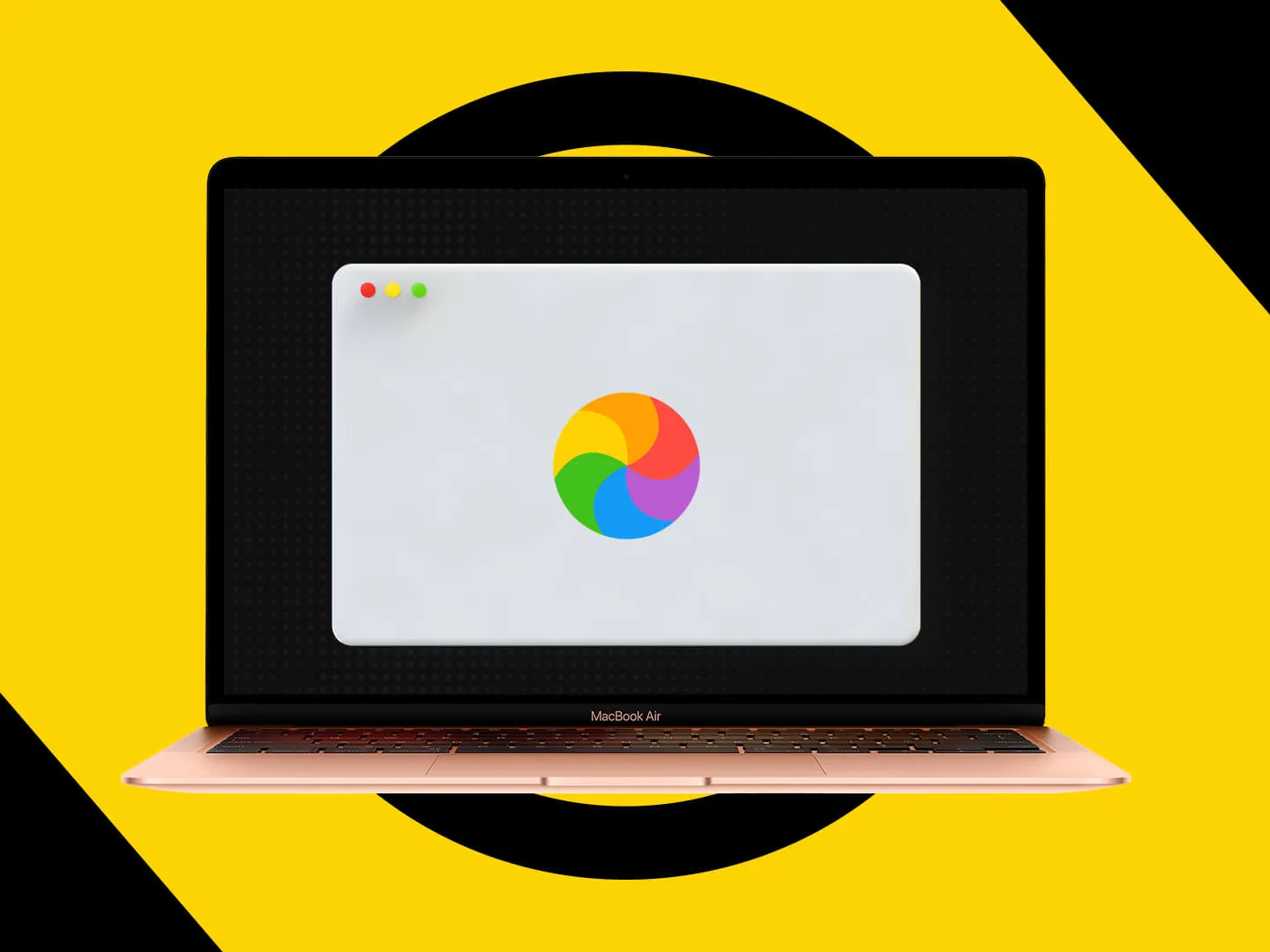Have you ever experienced the frustration of having an app on your Mac suddenly quit unexpectedly? It can be quite annoying, especially when you’re in the middle of something important. But worry not, as we have some troubleshooting tips to help you resolve this issue and get your app running smoothly again.
1. Check for System Updates:
One of the primary reasons for app crashes is the lack of compatibility between the app and your Mac’s operating system. Ensure that you have the latest version of the operating system installed on your device. To do this, go to the Apple menu and select “System Preferences.” Then, click on “Software Update” to check for any available updates. Install any pending updates to ensure that your system is up to date.
2. Force Quit Pages:
If an app like Pages is crashing frequently, you can try force quitting it and relaunching it. To force quit an app, press Command + Option + Esc simultaneously, and the Force Quit Applications window will appear. Select the app that is causing the issue (in this case, Pages) and click on the “Force Quit” button. Once done, relaunch the app and check if the issue persists.
3. Reset the Pages App:
Sometimes, resetting the app can fix any glitches or temporary issues that might be causing it to crash. To reset the Pages app, simply quit the app if it’s running, then hold down the Option key and click on the Pages icon in your Dock or Applications folder. A pop-up menu will appear, and you can choose to “Reset Pages.” This will reset the app to its default settings, potentially resolving any crashing issues.
4. Kill Resources-Hungry Processes:
Running too many resource-intensive processes simultaneously can strain your Mac’s performance and cause apps to crash. To fix this, you can use the Activity Monitor utility to identify and quit any processes that are using excessive resources. Open the Activity Monitor (found in the Utilities folder within the Applications folder or by searching in Spotlight), select the process that is consuming a lot of resources, and click on the “X” button at the top left corner to quit it. This should free up system resources and potentially prevent app crashes.
5. Clear Application Cache:
All Mac apps have a cache folder that stores various types of information. Over time, this cache folder can become cluttered and cause apps to freeze or crash. It’s crucial to clean the cache periodically. You can use third-party apps for this purpose, or you can manually clean an app’s cache from the Library. However, keep in mind that modifying the cache folder manually requires administrative privileges. If you don’t have admin privileges, contact the administrator of your Mac for assistance.
App crashes on Mac can be frustrating, but with these troubleshooting tips, you can resolve the issue and get your apps back up and running smoothly. Make sure to check for system updates, force quit and relaunch the problematic app, reset the app’s settings if needed, kill any resource-hungry processes, and clear the application cache. By following these steps, you should be able to troubleshoot and fix app crashes on your Mac effectively.

Why Do Apps Quit Unexpectedly?
Apps can quit unexpectedly for a variety of reasons. Here are some possible causes:
1. Compatibility issues: Sometimes, an app may not be fully compatible with the operating system version running on your device. This can lead to conflicts and result in the app crashing unexpectedly.
2. Software glitches: Apps are created by developers, who are humans prone to making mistakes. These mistakes can lead to software glitches that cause the app to crash. Developers often release updates to fix these glitches and improve app stability.
3. Insufficient device resources: Some apps require a significant amount of processing power, memory, or storage space to run smoothly. If your device doesn’t meet the app’s requirements, it may crash due to insufficient resources.
4. Network connectivity problems: Certain apps rely heavily on internet connectivity to function properly. If your device experiences network issues or weak signals, it can cause the app to crash unexpectedly.
5. Outdated app version: Using an outdated version of an app can also lead to crashes. Developers frequently release updates to address bugs and enhance performance. Running an older version may result in compatibility issues with your device’s operating system.
6. Conflicting apps: Sometimes, two or more apps may not work well together and create conflicts. This can cause one or both apps to crash unexpectedly. It’s essential to identify any conflicting apps and either update or remove them.
7. Hardware problems: In some cases, app crashes can be a result of underlying hardware issues with your device. It could be related to the device’s processor, memory, or other components. If you suspect hardware problems, it’s best to consult a technical expert for assistance.
To address app crashes, you can try the following steps:
– Update the app to the latest version: Developers often release updates to fix bugs and improve stability. Check if a new version is available and install it.
– Restart your device: Sometimes, a simple restart can resolve temporary glitches and free up system resources.
– Clear app cache and data: Accumulated cache and data can sometimes interfere with an app’s proper functioning. Clearing them can potentially resolve crashes.
– Check for conflicting apps: If you recently installed a new app, it might be conflicting with the one that’s crashing. Uninstalling or disabling the conflicting app may resolve the issue.
– Reinstall the app: If all else fails, uninstall the app completely and reinstall it. This can reset any settings or configurations that might be causing crashes.
Remember, app crashes can occur due to various factors, and troubleshooting steps may vary depending on the specific situation.
How Do I Fix Pages Quit Unexpectedly On Mac?
To fix the issue of Pages quitting unexpectedly on your Mac, follow these troubleshooting steps:
1. Check for system updates:
– Go to the Apple menu and click on “System Preferences.”
– Select “Software Update” and check if any updates are available.
– If updates are available, install them and restart your Mac.
2. Force Quit Pages:
– Press the Command + Option + Esc keys together to open the Force Quit Applications window.
– Select “Pages” from the list of applications.
– Click on the “Force Quit” button and confirm the action.
– Relaunch Pages and check if the issue persists.
3. Reset the Pages app:
– Quit Pages if it’s open.
– Go to the “Finder” and click on “Go” in the menu bar.
– Press and hold the Option key and select “Library” from the drop-down menu.
– Open the “Containers” folder, then find and delete the folder named “com.apple.iWork.Pages.”
– Restart your Mac and open Pages again.
4. Kill resources-hungry processes:
– Press Command + Space to open Spotlight search.
– Type “Activity Monitor” and open the application.
– In the Activity Monitor window, look for any processes related to Pages.
– Select the process and click on the “X” button in the toolbar to force quit it.
– Restart Pages and check if the issue is resolved.
5. Clear your application cache:
– Quit Pages if it’s open.
– Open the Finder and click on “Go” in the menu bar.
– Press and hold the Option key and select “Library” from the drop-down menu.
– Open the “Caches” folder and locate the folder named “com.apple.iWork.Pages.”
– Delete this folder.
– Restart your Mac and launch Pages.
If none of these steps resolve the issue, you may need to consider reinstalling Pages or contacting Apple Support for further assistance.
Why Does My Mac Apps Keep Crashing?
There are several reasons why your Mac apps may keep crashing. Let’s explore some of the most common causes:
1. Outdated software: If your apps are not up to date, they may not be fully compatible with the latest macOS version, leading to crashes. Make sure to regularly update both your apps and macOS to avoid this issue.
2. Insufficient system resources: Running too many apps simultaneously or having too many browser tabs open can strain your Mac’s resources. This can cause apps to crash, especially if they require a significant amount of memory or processing power. Consider closing unnecessary apps or restarting your Mac to free up resources.
3. Incompatible third-party software: Some apps may conflict with other software installed on your Mac. This can happen when multiple applications try to access the same system resources simultaneously. Disable or uninstall any recently installed third-party software to see if it resolves the crashing issue.
4. Corrupted cache files: Apps store temporary data in cache folders to improve performance. However, over time, these cache files can become corrupted, causing crashes. Clearing the cache for problematic apps may help resolve the issue.
5. Hardware issues: If none of the above solutions work, it’s possible that there may be a hardware problem with your Mac. Faulty RAM, a failing hard drive, or other hardware issues can cause apps to crash. Consider contacting Apple Support or visiting an authorized service provider for further assistance.
To summarize, Mac apps may keep crashing due to outdated software, insufficient system resources, incompatible third-party software, corrupted cache files, or hardware issues. By addressing these potential causes, you can improve the stability of your Mac apps and reduce crashes.
What To Do If An App Won’t Open On Mac?
If you encounter an issue where an app won’t open on your Mac, there are a few steps you can take to troubleshoot the problem. Here are some possible solutions:
1. Check for compatibility: Ensure that the app you’re trying to open is compatible with your version of macOS. Some older apps may not work properly on newer operating systems.
2. Restart your Mac: Sometimes, a simple restart can resolve app-related issues. Close all open applications, click on the Apple menu, and select “Restart.”
3. Update the app: Make sure you have the latest version of the app installed on your Mac. Open the App Store and navigate to the “Updates” tab to check for any available updates.
4. Check for software updates: Keeping your macOS up to date is important for app compatibility. Go to the Apple menu, select “System Preferences,” and click on “Software Update” to check for and install any pending updates.
5. Delete and reinstall the app: If the app continues to refuse to open, try deleting it from your Mac and reinstalling it. To do this, simply drag the app icon from the Applications folder to the Trash, and then download and install the app again from a reliable source.
6. Reset app preferences: Some apps may have preferences or settings that could be causing them to malfunction. To reset an app’s preferences, go to the “Library” folder in your user directory, locate the app’s preferences file, and move it to the Trash. The app will create a new preferences file when you relaunch it.
7. Check for conflicting software: Occasionally, other software on your Mac can interfere with app functionality. Temporarily disable any antivirus or security software, as well as any browser extensions or plugins, and try opening the app again.
8. Contact the app developer: If none of the above steps resolve the issue, reach out to the app’s developer for further assistance. They may be aware of any known issues and can provide you with specific troubleshooting steps.
Remember to always exercise caution when downloading and installing apps from the internet. Stick to reputable sources and avoid downloading software from unknown or suspicious websites.
Conclusion
If you are experiencing frequent app crashes on your Mac, it is important to take several troubleshooting steps to resolve the issue. First, ensure that you are running the latest version of the app, as older versions may not be fully compatible with your operating system or may contain known glitches. Additionally, checking for system updates can help ensure that your Mac is running the latest software, which can also improve app stability.
If the app continues to crash, try force quitting the app and then resetting it. This can often resolve minor issues that may be causing the crashes. Furthermore, killing any resource-hungry processes running in the background can free up system resources and potentially improve app performance.
Another potential solution is to clear the application cache. Over time, app caches can become filled with unnecessary data, which can lead to freezes or crashes. Cleaning the cache can help alleviate these issues. There are various apps available that can assist with this task, or you can manually clear the cache from the Library.
It is also worth noting that if you do not have the necessary privileges to open the app, or if the app is damaged or not installed correctly, it may result in unexpected quits. In such cases, contacting the administrator of your Mac is recommended.
By following these troubleshooting steps, you can increase the chances of resolving app crashes and enjoying a stable and reliable experience on your Mac.








